40 Best Places to Visit in Summer in India
Summer in India is a time when most parts of the country experience rising temperatures, but it also opens the door to some of the...

Prayagraj erstwhile Allahabad is a city in the Indian state of Uttar Pradesh is popular as a pilgrimage destination amongst travellers. Nestled away near the sacred confluence of the river Ganges, Yamuna and the mythical Saraswati rivers, Arail Ghat is one of Prayagraj quieter lesser-known spots that offers both spiritual solace and scenic charm. Though it may not be a featured tourist spot, it certainly deserves a place on your itinerary if you’re exploring the spiritual heart of India.
You might wonder what makes Arail Ghat special, honestly it’s peaceful ambiance takes the rightful credit and so does its picturesque surroundings. From the ghat you can catch a beautiful glimpse of the iconic Naini Bridge, as well as a few small temples that add to the tranquil surroundings. The ghat is very close to the holy Triveni Sangam that adds a layer of religious significance drawing pilgrims and peace-seekers from all around the country.
Beyond its sacred ties, Arail Ghat in Prayagraj is a hidden gem where you can unwind without any worries. And as the day unfolds you can explore the nearby markets to taste the local flavours, watch the sunset by the riverside (or sunrise) and call it a day at Arail Ghat!
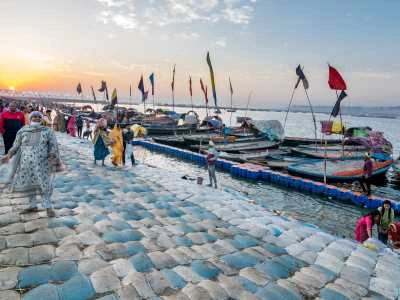
The weather in Prayagraj is fairly a combination of hot, humid and breezy all year round.
No matter when you go, Arail Ghat has a unique charm that reflects the rhythm of the city’s seasons.
Arail Ghat in Prayagraj is very easily accessible by all forms of transport. The ghat is ideally located along the Arail Road nearby landmark being Falhari Ashram in Prayagraj. Besides the ghat’s ideal location, let us talk about the various ways to reach Arail Ghat.

Prayagraj is known for its Triveni Sangam which is its heart and soul. This is where three rivers, the holy Ganga, the sacred Yamuna and the mythical Saraswati, merge in a spiritual confluence.
The Triveni Sangam holds immense religious significance and is considered as one of the most auspicious confluences in Hinduism. A dip at the Sangam is believed to absolve one of one’s sins and grant salvation.
Beyond its religious relevance, the Sangam offers a surreal experience. Visitors often take boat rides to witness the exact point where the distinct colors of the Ganga and Yamuna meet in a beautiful symphony. The tranquility of the river, coupled with the sight of devotees performing rituals, creates a powerful imagery and atmosphere.
The Kumbh Mela, the largest human gathering on earth, is held here every 12 years, while the Ardh Kumbh and Magh Mela draw pilgrims annually. Located about 2-3 km from Arail Ghat, the Sangam is a must-visit whether for spiritual reasons or the unique cultural vibe.
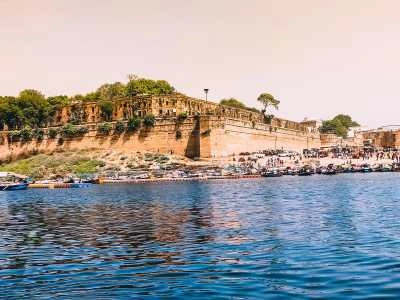
Commissioned by the Mughal Emperor Akbar in 1583, the Allahabad Fort stands as a symbol of Mughal architectural prowess and strategic military planning. Situated on the banks of the Yamuna, near the Sangam, this fort was once among the grandest forts of the Mughal Empire to be ever created.
Though large portions are under the control of the Indian Army, the fort’s public areas include the Patalpuri Temple, an underground shrine believed to house the sacred Akshaya Vat, a mythical banyan tree said to be indestructible and people earlier believed that to escape the cycle of rebirth one needs to jump into the sangam from the tree. The fort also features massive stone walls, grand gateways, and Persian inscriptions that reflect its rich history and a formidable bygone era.
For visitors, it offers a unique blend of history, architecture, and mythology. Entry is restricted to guided visits of certain sections, but the surrounding area offers beautiful views of the river and Sangam. Located just 3 km from Arail Ghat, it’s easily accessible and acts as a perfect buffer for a day out.
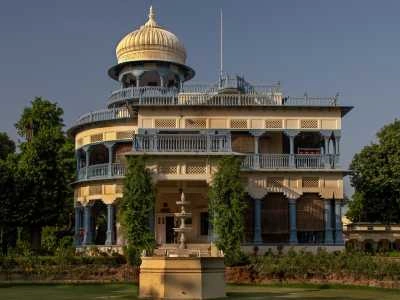
Renowned as the residence of the erstwhile Nehru family, Anand Bhavan is now a well-maintained historic museum that offers deep insights into India’s freedom struggle and one of the most politically influential families. Originally built by the patriarch of the Nehru family, Motilal Nehru, this stately mansion was the hub of political activity during the Indian independence movement.
The museum showcases personal belongings, rare photographs, letters, and artifacts of the Nehrus, including Pandit Jawaharlal Nehru and Indira Gandhi and few other prominent politicians. Visitors can also see the room where meetings of the Indian National Congress were held and the study where Nehru penned his famous literary and political works.
Located in the Civil Lines area, about 7 km from Arail Ghat, Anand Bhavan provides a poignant look into India’s socio-political history, making it a must-visit for history enthusiasts.
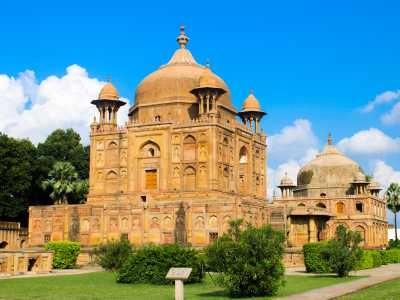
A walled Mughal garden spread over 40 acres, Khusro Bagh houses the tombs of prominent Mughal royalty, including Prince Khusrau Mirza (the rebellious son of Emperor Jahangir), his mother Shah Begum, and his sister Nithar Begum.
The mausoleums are adorned with intricate Mughal artistry, sandstone structures, floral motifs, and Persian inscriptions, all within a tranquil garden setting. While less crowded than other tourist spots, Khusro Bagh offers a peaceful retreat for visitors interested in history, architecture, or simply a leisurely stroll.
Located around 5 km from Arail Ghat, this heritage site remains an underrated gem in Prayagraj although its historical relevance trumps its popularity.
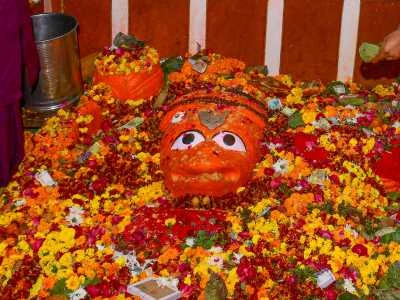
Unique in its depiction, the Lete Hanuman Mandir features a 20-foot-long reclining idol of Lord Hanuman, an uncommon representation of the revered deity. The temple is located near the Triveni Sangam and draws countless devotees every day of the year.
One of its fascinating aspects is that the temple’s sanctum often gets submerged during the monsoon season when the Ganga floods, a phenomenon considered auspicious by locals and devotees alike. Pilgrims believe that visiting this temple bestows strength and divine blessings.
Situated around 3 km from Arail Ghat, the temple’s spiritual aura and mythological significance make it a key religious site in Prayagraj.
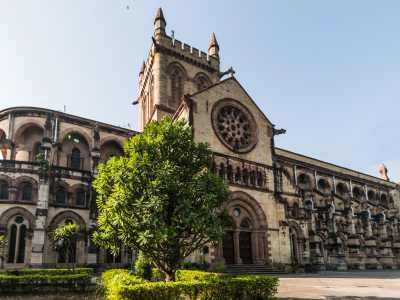
Often locally called Patthar Girja, meaning “Church of Stone,” All Saints Cathedral is a stunning example of Gothic Revival architecture. Built in 1871 by British architect Sir William Emerson, this Anglican cathedral is known for its majestic iron spires, intricate stained glass windows, and beautifully carved ornate stonework.
The cathedral holds regular services, masses and stands as a symbol of the colonial-era craftsmanship that left its imprint on Prayagraj (erstwhile Allahabad) for generations to come. Inside, visitors can admire the serene interiors and reminisce about the bygone era, while the exteriors are perfect for photography enthusiasts.
Located in Civil Lines, about 6 km from Arail Ghat, it’s a serene stop for anyone interested in history, architecture, or spirituality.
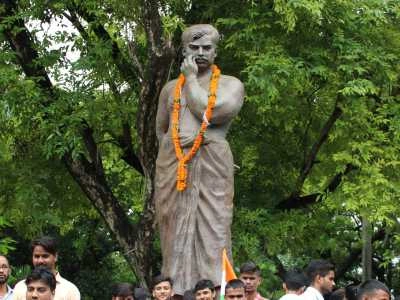
Formerly known as Company Bagh due to its colonial etymology, this sprawling 133-acre park was renamed in honor of freedom fighter Chandrashekhar Azad, who made his final stand here in 1931. The park features lush lawns, tree-lined pathways, a public library, and statues commemorating Azad’s sacrifice.
It serves as a peaceful spot for morning joggers, families, and visitors wanting to soak in a piece of India’s revolutionary past. The park also hosts local cultural events and fairs from time to time.
Located about 6 km from Arail Ghat, the park is perfect for a quiet break amidst sightseeing.
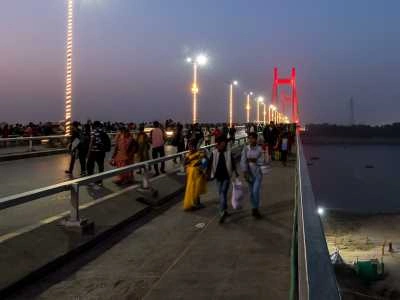
Prayagraj is known for its two iconic Yamuna bridges:
Both bridges are within 2–3 km of Arail Ghat and offer great spots for photography and cityscapes.
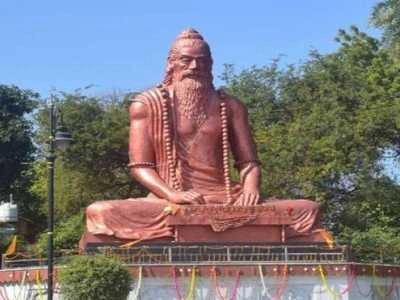
Steeped in mythical legend, the Bharadwaj Ashram is believed to have been the hermitage of Sage Bharadwaj, one of the revered Saptarishis (seven great sages) in Hindu mythology. This ashram is a peaceful spiritual site where devotees seek blessings and meditate surrounded by spiritual atmos and sages.
Surrounded by greenery and ancient stories, the ashram retains its traditional aura and is a great place for those interested in mythology or seeking solace away from the city’s hustle.
Located around 6 km from Arail Ghat, Bharadwaj Ashram is a peaceful detour on your Prayagraj exploration.
The ideal time to visit Arail Ghat is during the winter months (October to February) when the weather is pleasant and outdoor activities are more enjoyable. It is also the peak season for festivals like Magh Mela, and the riverfront becomes vibrant with cultural and spiritual fervor. Early mornings are best if you’re looking to avoid crowds and experience the spiritual aura of the ghat.
Avoid visiting during peak summer (May–June) due to extreme heat, and exercise caution during monsoon (July–September) as water levels can rise rapidly, making the area unsafe for close river access.
The Arail Ghat is known for its spiritual confluence, natural charm, and calming atmosphere. Whether you’re a pilgrim, a curious traveler, or a photography enthusiast, this lesser-known yet soul-soothing destination in Prayagraj is sure to leave a lasting impression. So, when planning your trip to the city, don’t skip Arail Ghat, let it be the place where your journey finds a moment of peace.
Summer in India is a time when most parts of the country experience rising temperatures, but it also opens the door to some of the...
India is a land of incredible diversity, geographically, culturally, and climatically. From the snow-covered Himalayas to sun-kissed beaches, dense jungles, and royal deserts, every region...
South India, comprising Kerala, Tamil Nadu, Karnataka, Andhra Pradesh, Telangana, and the union territories of Puducherry and Lakshadweep, offers a remarkable diversity of landscapes and...
You are one step closer to having the best journey of your lifetime! Talk to us, write to us all that you have envisioned for your India trip, and one of our travel experts will connect with you on priority. To help you explicitly we have WhatsApp and Email addresses!